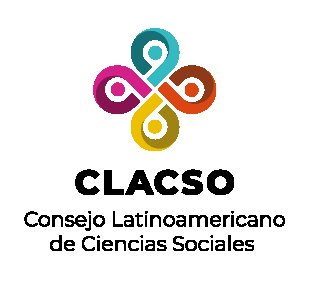Authors
Abstract
Abstract:Starting in the mid-twentieth century, Santiago de Cali has witnessed a process of expanding its city limits and areas that have been incorporated into the official and illegal urbanization dynamics. The illegal occupations are usually called slums, substandard neighborhoods and, more recently, Incomplete Human Settlement Developments, which are located both in the east region and on the slopes of the mountain chain. Some of these settlements were established in particular places such as on a mirror of water in an artificial lake, on mining areas and on river jetties. The various municipal authorities from Cali have not been able to solve the problem of illegal seizures of land, neither have they achieved an effective control of land use. Every rainiy season in the city, makes the issue of settlements located on high-risk urban areas be exposed to the public and makes the different actors talk about it; but once the rainy season is over, the issue is forgotten.
In this context, it is important to ask about the role of the State facing the management and search of solutions that besides allowing mitigation of the phenomenon, provide structural answers to the complexity of the problem the phenomenon of the Cauca River jetty presents. Nowadadys, after 30 years of being occupied, this process continues: still the population is settled, the local administration bodies and other bodies responsible for the situation act in a very shy way facing the magnitude the phenomenon has reached in recent decades. Communities demand either to be recognized their ownership of these areas or to be evicted by a plan that includes subsidies and relocation in safer areas in the city. To analyze this, the text is divided into three parts: the first part presents the process of occupation of the Cauca River jetty, the second part presents the State’s response over time and the role of its agents, and finally in the third part, some concluding remarks are presented.
Keywords
References
Giménez, M. N., y Ginóbili, M. E. (2003). Las ‘Villas de emergencia’ como espacios urbanos estigmatizados. Historia Anual On Line, 1, 75-81.
Jiménez P., Nayibe. (2005). Elementos históricos y urbanos en la generación de desastres por inundaciones y deslizamientos en Cali. 1950-2000. Director: Julián Velásquez. Santiago de Cali: Universidad del Valle, Programa de Historia, Facultad de Humanidades. Ejemplar fotocopiado.
TARROW, Sidney. (1997). El poder en movimiento. Los movimientos sociales, la acción colectiva y la política. Madrid: Alianza Universidad.
Uribe Castro, Hernando. (2007). Estrategias de poblamiento y propiedad de la tierra en el jarillón de los ríos Cauca y Cali, en la ciudad de Cali, 1980-2006. Tesis de grado Maestría en Sociología, Universidad del Valle.
Urrea, F., y Murillo, F. (1999). Dinámica del poblamiento y algunas características de los asentamientos populares con población afrocolombiana en el oriente de Cali. En Cubides,
F., y Domínguez, C. (eds.), Desplazados, migraciones internas y reestructuraciones territoriales (pp. 337-405). Observatorio Socio-Político y Cultural. Centro de Estudios Sociales. Facultad de Ciencias Humanas, Universidad Nacional de Colombia.
Vásquez, Edgar. (2001). Historia de Cali en el siglo XX. Sociedad, economía, cultura y espacio. Santiago de Cali: Artes Gráficas del Valle.
Velásquez, Andrés, y Jiménez, Nayibe. (2004). La gestión de riesgos en el ordenamiento territorial: inundaciones en Cali, la C.V.C. y el fenómeno ENSO. Disponible en:
http://www. cambioglobal.org/enso/public/downloads/lgrotic_enso_2004.pdf
Vergel Tovar, Erik. (2010). Asentamientos precarios: Una aproximación para su mejoramiento integral y prevención. de-arq, 6, 64-81. Bogotá: Universidad de los Andes. Disponible en: http://dearq.uniandes.edu.co/sites/default/files/articles/attachments/dearq06_06_-_ Vergel.pdf
Informes técnicos y oficiales
CVC. (2000). Plan estratégico para la recuperación y conservación del jarillón del río Cauca.
CVC. IPI DAGMA. Santiago de Cali. Decretos
Alcaldía de Cali. Decreto 0668 de octubre de 2005. www.cali.gov.co Superintendencia de Servicios. Decreto 3735 de 2003. (Dic. 9). Ministerio de Minas y Energía, República de Colombia.
Boletines informativos Alcaldía de Cali
Alcaldía de Cali. (2005, diciembre 17). Boletín 135. Para atender la emergencia formulada en el Decreto N° 0668 del 4 de octubre de 2005 mediante el cual la Administración Municipal declaró el jarillón del río Cauca como zona de alto riesgo debido a la ocupación del dique frente a Desepaz.
ALCALDIA DE CALI. (2010). Asentamientos Humanos de Desarrollo Incompleto Existentes en el Municipio de Santiago de Cali. Secretaria de Vivienda Social, Fondo Especial de Vivienda, 2010

 PDF (Español)
PDF (Español)
 FLIP
FLIP
























